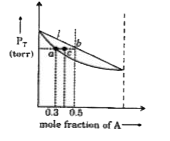A compound has rock salt type structure. The formula mass of Ab is 6.023 y amu and the closest approach distance of in the crystal is nm. What is the density of the lattice in ?Solution in Malayalam
5
7
9
11
Step by step video & image solution for A compound A^(+)B^(-) has rock salt type structure. The formula mass of Ab is 6.023 y amu and the closest approach distance of A^(+)B^(-) in the crystal is y^(1//3) nm. What is the density of the lattice in Kg//m^(3)? by Chemistry experts to help you in doubts & scoring excellent marks in Class 12 exams.
Updated on:21/07/2023Topper's Solved these Questions
- SOLID STATEBOOK - BRILLIANT PUBLICATIONCHAPTER - SOLID STATEEXERCISE - QUESTION (LEVEL -II) (Assertion-Reason)
4 Videos
- SOLID STATEBOOK - BRILLIANT PUBLICATIONCHAPTER - SOLID STATEEXERCISE - QUESTION
14 Videos
- SOLID STATEBOOK - BRILLIANT PUBLICATIONCHAPTER - SOLID STATEEXERCISE - LEVEL-3 (Linked Comprehension Type)
10 Videos
- REDOX REACTION & ELECTROCHEMISTRYBOOK - BRILLIANT PUBLICATIONCHAPTER - REDOX REACTION & ELECTROCHEMISTRYEXERCISE - QUESTION (ELECTROCHEMISTRY) (LEVEL -II) (ASSERTION-REASON)
3 Videos
- SOLUTIONSBOOK - BRILLIANT PUBLICATIONCHAPTER - SOLUTIONSEXERCISE - Level-III (Linked Comprehension Type)
12 Videos
Similar Questions
Assertion (A) : In Rock salt type structuires, all the coctahedral voids in the close packing of anions are occupied by cations.
Reason(R): In Rock salt structure, the distance of closest apprach between two anions is equal to hal the face diagonal of unit cell.
View SolutionA compound of elements X and Y crystallizes in cubic structure where X atoms occupy the corners of the cube and Y atoms occupy the centre of the cube. What is the formula of the compound?
View SolutionF centre is an example of metal excess defect due to the presence of extra cations at interstitial sites. Zinc oxide is white in colour at room temperature, on heating it loses oxygen and turns yellow.
ZnOHeat−−→Zn2++12O2+2e−
Now there is excess of zinc in the crystal and its formula becomes Zn1+x O. the excess of Zn2+ ions move to interstitial sites and the electrons to neighbouring interstitial sites.
There are many solids which are difficult to prepare in the stiochiometric composition and contain less amount of the metal as compared to stiochiometric proportion. a typical example of this type is FeO which is mostly found with a composition of Fe0.95. it may actually range from Fe0.96 O.
Q. In Fe0.95 O:
View SolutionAssertion: After the electrolysis of aqueous CuSO4 solution pH decreases.
Reason: Sulphuric acid is formed.
View Solution1 mole of A and 1 mole B are mixed together to form an ideal solution at 25∘C. Solution is placed in a vessel fitted with piston. If pressure on the solution is reduced isothermally.

Correct relationship between P∘AandP∘B is
View SolutionA compount AB has a rock type structure with A:B=1:1 . The formula weight of AB is 6.023 Y am u and the closed A-B distance is Y^(1//3) nm. (i) Find the density of lattice. (ii) If the density of lattice is found to be 20 kg m^(-3) , then predict the type of defect.
View SolutionA compound AB has a rock salt type structure with A:B=1:1 . The formula weight of AB is 6.023 y amu and the closest A-B distance is y1/3 nm. Calculate the density of lattice (in kg/m3)
View SolutionA binary salt AB (formula weight = 6.023 Y amu, where Y is an arbitray number) has rock salt structure with 1 : 1 ratio of A to B. The shortes A - B distance in the unit cell is Y^(1//3)nm . (a) Calculate the density of the salt in kg m^(-3) (ii) Given that the measured denstiy of the salt is 20 kg m^(-3) , specify the type of point defect present in the crystal
View SolutionAB crystallizes in a rock salt structure. The nearest distance between A and B is Y1/3 nm, where Y is a constant. The molecular mass of AB is 6.023 Y g/mol−1 .Determine the density in kgm−3.
View SolutionAn ionic compound AB has a rock salt structure with A :B = 1:1. the formula mass of AB is 6.023 y amu and the closest A-B distance is y^(1//3) nm. (a) Calculate the density of the attice. (b) If the observed density of the lattice is found to be 20 " kg m"^(-3) . then predict the type of defect.
View SolutionAn ionic compund AB has a rock salt structure with A:B=1:1 . The formula mass of AB is 6.023 y amu and the closest A-B distance is y^(1//3) nm (a)Calculate the density of the lattice. (b)If the observed density of the lattice is found to be 20 kg m^(-3) , then predict the type of defect.
View SolutionA compount AB has a rock type structure with A:B=1:1. The formula weight of AB is 6.023Yamu and the closed A−B distance is Y1/3nm.
(i) Find the density of lattice.
(ii) If the density of lattice is found to be 20kgm−3, then predict the type of defect.
View SolutionA compound AB has a rock salt type structure with A:B=1:1 . The formula weight of AB is 6.023 y amu and the closest A-B distance is y1/3 nm. Calculate the density of lattice (in kg/m3)
View SolutionA compound AB has a rock salt type structure with A:B=1:1. The formula weight of AB is 6.023y grams and the closest A−B distance is y1/3Å. If the density of lattice is 'x' g/cc then x is
View SolutionAB crystallizes in a rock salt structure. The nearest distance between A and B is Y1/3 nm, where Y is a constant. The molecular mass of AB is 6.023 Y g/mol−1 .Determine the density in kgm−3.
View Solution
